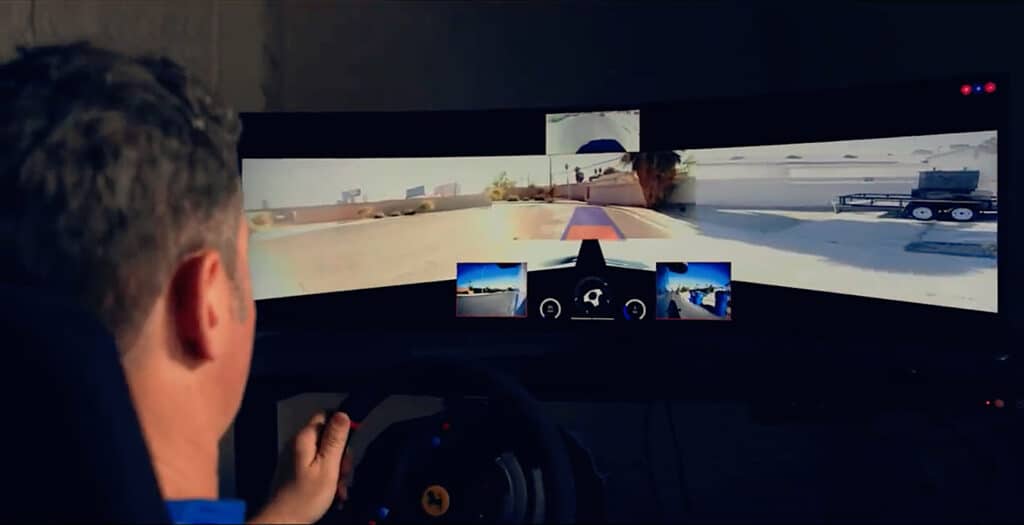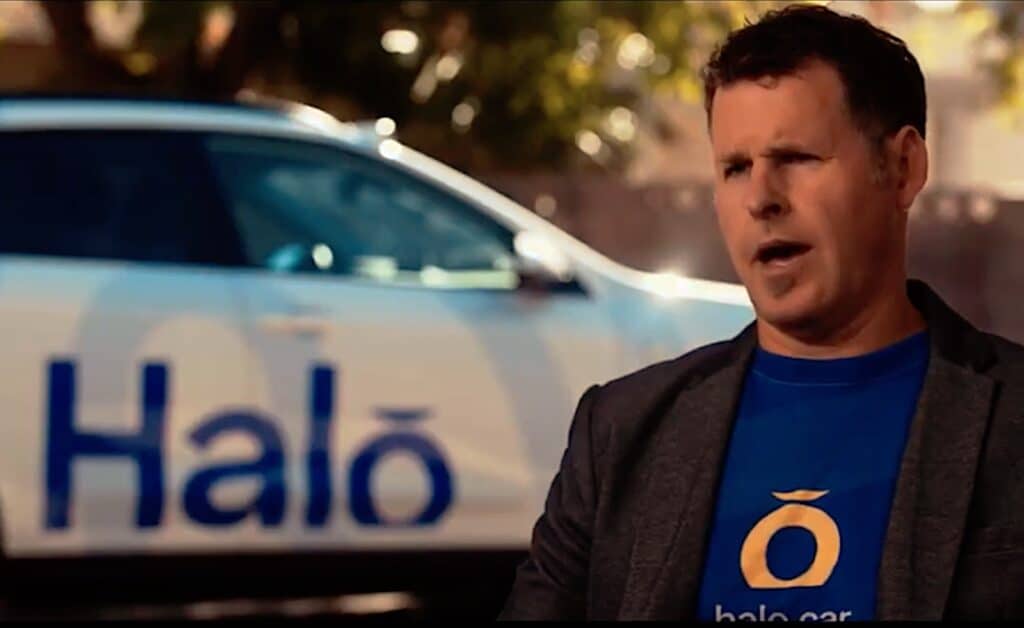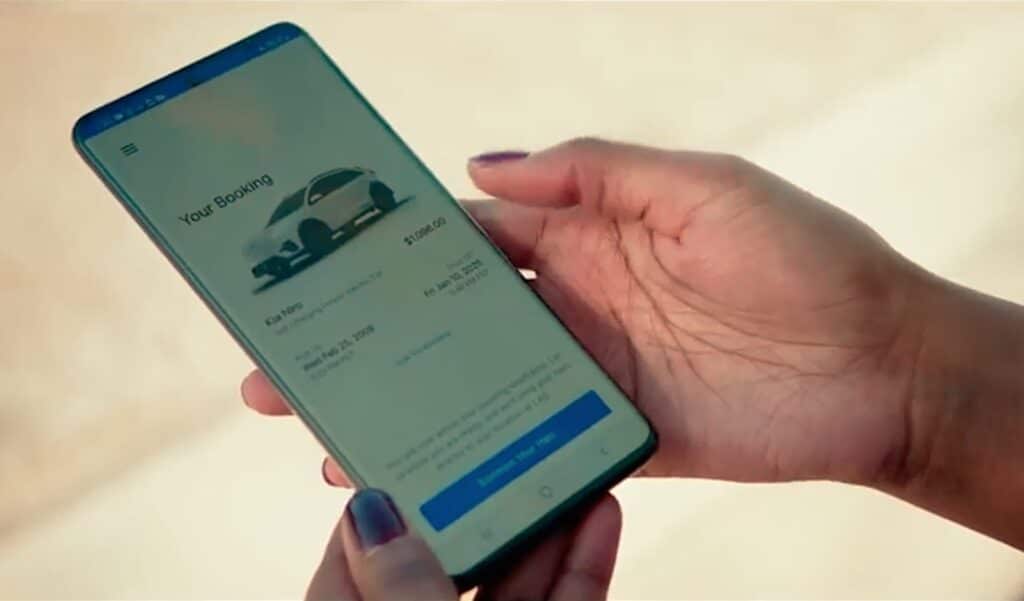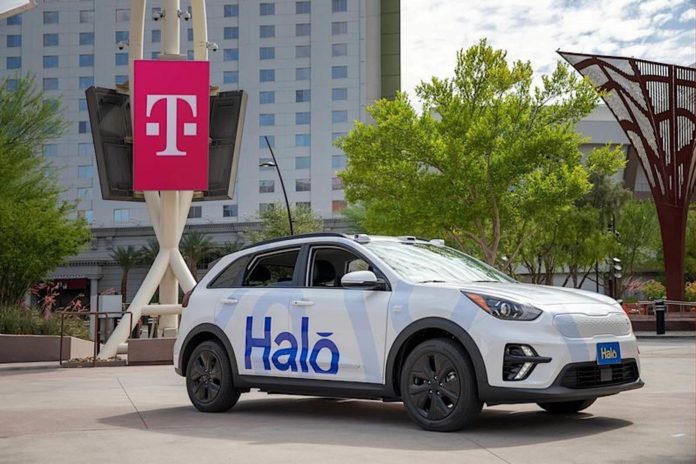Las Vegas seems to be the perfect place to test out autonomous and now remote-piloted vehicles.
Perhaps it’s the town’s “anything goes” attitude, or just the fact that you have a lot of people who need rides inside a fairly compact area with mostly predictable traffic patterns. Either way, Vegas is the place to experience the latest in mobility innovations.
Among the autonomous shuttles and taxis now plying the Las Vegas downtown area in beta mode, you’ll now see Halo.Car, which is driverless but not autonomous. Instead, Halo is developing remote control technology where the vehicle is “driven” by a human being in an office using a real-time simulator.
With cameras mounted on the vehicle delivering a virtual view of the road, the remote driver can pilot any of a fleet of Kia Niro EVs to the precise location of a renter. The renter can then drive the car normally. When they’re done, they just let Halo know and a remote driver takes over and brings the Kia back to home base.
“Halo is an all-electric, driverless mobility solution where we provide a car on demand through a mobile app,” said Bill Reeves, head of hardware for Halo.
How it works

Halo’s remote pilots undergo a rigorous three-month training and certification process, which includes 40 hours of remote driving in real-world conditions using actual roads. During the training, the remote pilot is backed up by a human driver in the driver’s seat of the vehicle. Halo has been testing the service with three Niro EVs. Each has been outfitted with the camera and remote control systems necessary for remote piloting.
The Halo remote piloting system uses a simulator similar to a gaming setup for racing. The cameras deliver a real-time view of the road around the vehicle, and a remote driver simply pilots the rental to the specified location.
In the event of a problem, the remote pilot can move the car to the side of the road and call for help. If the system fails totally, the Halo will come to a stop right in its lane, which could pose a variety of problems for the company if it happens regularly.
However, the remote pilot system uses T-Mobile, AT&T and Verizon networks to maintain maximum connectivity, and the company is currently deploying “chase cars” behind the remote-piloted vehicles to take over with a human driver if something goes wrong. Halo uses human drivers to deliver cars throughout the Las Vegas metro area, including Henderson, and currently the remote-control drivers serve just a small area around downtown Las Vegas.

“Safety is of the utmost importance, which is why we use human drivers rather than autonomous technology,” said Anand Nandakumar, founder and CEO of Halo. “Autonomous vehicles today call on human intervention when they face a challenge because the technology isn’t as smart as a human. Using remote human drivers instead of autonomy is a faster and safer way to get ‘driverless’ cars deployed to customers.”
From the customer side, a renter requests the vehicle through a phone app that allows them to specify when and where the car should be delivered. Billing is handled through the app. When the customer is done with the car, they simply get out and notify Halo through the app that the car can be picked up.
“We use 5G to bring an all-electric driverless car to wherever you are, and then we just let you drive the car once it gets there,” Nandakumar said. “The way we operate our cars is by having multiple cameras that are integrated into the vehicle, real-time streamed to our remote pilot.
“That gives full 360-degree visibility, so the network is absolutely important for us. We need to work with our partners in T-Mobile so we can understand where to deploy with the current infrastructure, and how do we leverage that network to deploy. We want to blanket the city.”
Raising capital

In October 2022, Halo announced a $5 million seed round of financing led by the climate tech fund At One Ventures, with participation from T-Mobile Ventures, Earthshot Ventures, and their existing investor, Boost VC.
The lead financier of this round, At One Ventures, is a venture capital firm which backs early-stage companies using deep tech to disrupt their established industries. At One Venture’s Founding Partner Tom Chi, who led the investment, was a founding member of Google X, the incubator that produced self-driving car company Waymo.
“Widespread deployment of autonomous vehicles is still forthcoming, and even when they arrive, it will be essential to have technology like Halo.Car’s in place that allow human backup in challenging situations,” said Chi. “Until then, on-demand carshare enabled by Halo.Car’s remote pilot technology can accelerate the transition to EVs while freeing customers from needing to own and maintain a vehicle.”
Attractive pricing
One of the most appealing parts of the Halo business model is the price. Rentals go for a flat rate of $10 per hour or $80 per day, plus a $20 delivery fee. If you’ve taken an Uber or Lyft in Las Vegas, or even worse, a Taxi, you’ll know that $30 for a ride across town is a bargain. Each rental includes 150 miles of free range, which is more than you could realistically drive in a week, provided you didn’t head outside of the city.
The one drawback of the Halo.Car offer is that it isn’t available at McCarran Airport, where the traditional rental car companies, taxis, and ride-shares have a hammerlock on the business. That means Halo renters will need to go to a hotel or somewhere else first.
As the Halo team points out, true autonomous taxi services are really not yet ready for prime time, and may not be ready for a while yet. Halo’s mixed human/driverless model provides a solution that leapfrogs competitors like Motional, Lyft, Hyundai and Waymo.

